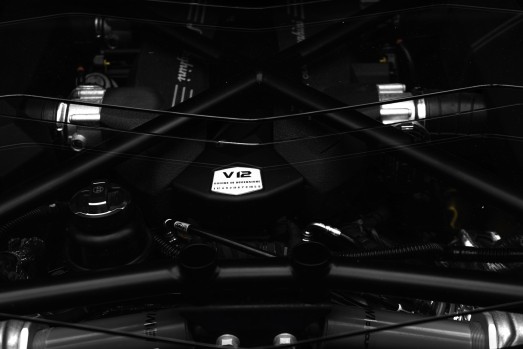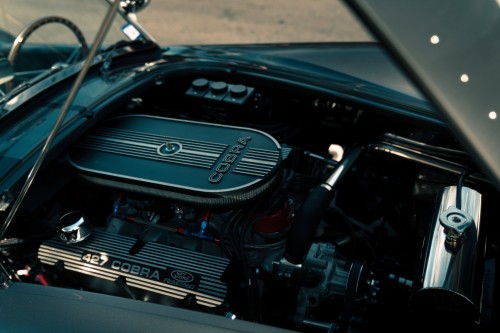When it comes to automatic gearbox fluid (ATF), the decision between Dexron 3 and Dexron 6 is quite important since it affects how well and how long your car’s gearbox will last. The more we examine the subtleties of these ATF variations, the more important it is to comprehend their history, salient features, and the development that resulted in Dexron 6. By shedding light on the intricacies of Dexron 3 and Dexron 6, this investigation seeks to enable you to make well-informed choices regarding the vital components of your car’s gearbox.
Importance of choosing the right ATF for optimal performance:
The lifetime and best operation of your car’s gearbox system depend greatly on the automatic gearbox fluid (ATF) you choose. With its vital functions of heat dissipation, hydraulic pressure management, and lubrication, ATF is the lifeblood of automatic gearboxes. Selecting the proper ATF not only helps with seamless gear changes but also offers corrosion and wear protection. Inappropriate or out-of-date ATF usage can result in reduced efficiency, elevated friction, and perhaps expensive gearbox damage. As ATF formulas have advanced, knowing the differences between Dexron 3 and Dexron 6 is essential to customising your selection to your car’s particular requirements, which will ultimately affect your car’s overall performance and dependability.

Dexron 3:
The Pioneer of ATF Dexron 3 appeared at a critical point in the history of cars. It was first introduced by General Motors (GM) in the late 1970s, and for a wide range of automatic gearboxes, it quickly became the industry standard.
Key Characteristics:
- Viscosity and Frictional Properties: Viscosity and frictional properties that are essential for seamless gear changing and overall gearbox performance are exhibited by Dexron 3.
- Additive Package: Additives to improve oxidation resistance, stop corrosion, and preserve ideal frictional qualities are used in its composition.
Applications and Compatibility:
- Widespread Use: Dexron 3 became widely used in a variety of car models and manufacturers, proving to be a flexible ATF.
- Compatibility: Even if it works with a lot of transmissions, it’s important to follow the manufacturer’s instructions.
Pros and Cons:
- Pros: dependable performance, broad accessibility, and interoperability with older cars.
- Cons: Stricter than more recent formulations, it might not be able to satisfy the requirements of contemporary transmissions.
Dexron 6:
Evolutionary Leap: Dexron 6 is a significant advancement in ATF technology, expanding on the groundwork set by Dexron 3’s predecessor. Dexron 6, which was unveiled by General Motors in the middle of the 2000s, was designed to satisfy the more complex requirements of contemporary automatic gearboxes.
Enhanced Features and Improvements:
- Viscosity and Frictional Properties: With its enhanced frictional properties and viscosity control, Dexron 6 maximises performance under a variety of driving circumstances.
- Oxidation Resistance and Thermal Stability: increased formulation ensures longer fluid life and maintained performance by offering better resistance to oxidation and increased thermal stability.
- Wear Protection: With its sophisticated anti-wear ingredients, Dexron 6 provides increased protection against wear and strain caused by friction.
Applications and Compatibility:
- Modern Vehicle Compatibility: Dexron 6 is the recommended option for many late-model cars as it is designed to satisfy the requirements of more recent automatic gearboxes.
- Backward Compatibility: Although it is intended for more recent gearboxes, it frequently works with cars that need Dexron 3.
Pros and Cons:
- Pros: longer fluid life, enhanced performance in harsh environments, and compatibility with a large variety of contemporary transmissions.
- Cons: Usually more costly than Dexron 3, and it might not meet the requirements of older cars.

Key Differences:
1. Viscosity and Frictional Properties:
- When compared to Dexron 3, Dexron 6 has better frictional qualities and more sophisticated viscosity control. This leads to more seamless gear changes and improved gearbox performance, particularly under a variety of driving circumstances.
2. Oxidation Resistance and Thermal Stability:
- With its sophisticated composition, Dexron 6 offers better thermal stability and increased resistance to oxidation. Longer fluid life and sustained performance are the results of this, especially in high-stress situations.
3. Wear Protection:
- Modern anti-wear additives are included in Dexron 6, offering enhanced protection against wear and tear caused by friction. Compared to Dexron 3, this is a significant improvement that will prolong gearbox life.
4. Fuel Efficiency and Environmental Impact:
- Dexron 6 is designed to help increase fuel efficiency in line with the increasing focus on environmental factors. The goal of its formulation is to lessen energy losses and friction in the gearbox system.
5. Applications and Compatibility:
- While Dexron 6 is designed to fit the requirements of contemporary automatic gearboxes, Dexron 3 is best suited for older cars and transmissions. Dexron 6 is appropriate for a wider variety of applications as it frequently provides backward compatibility.
Choosing the Right ATF:
1. Vehicle Compatibility and Manufacturer Recommendations:
- To find the recommended ATF by the manufacturer, see the handbook that came with your car. Selecting an ATF that complies with these requirements guarantees lifetime and optimum performance.
2. Performance Requirements for Specific Driving Conditions:
- Think about the normal driving circumstances you experience. A high-performance ATF like the Dexron 6 would be better appropriate if you routinely haul big loads or traverse difficult terrain.
3. Considerations for Older and Newer Vehicles:
- While Dexron 6 is intended for gearboxes that are more recent, Dexron 3 is frequently a dependable option for older cars. To make an informed choice, consider the age and gearbox technology of your car.
4. Transmission Fluid Change Intervals:
- Follow the suggested intervals for fluid changes found in the handbook for your car. Frequent maintenance keeps the ATF operating at its best and helps avoid gearbox problems.
5. Environmental Considerations:
- For people who care about the environment, Dexron 6 could be a better option due to its focus on increased fuel economy. But be sure it works with the car you have and how you want to use it.
6. Performance Upgrades and Modifications:
- Seek advice from automotive specialists if you’ve upgraded or modified your car to find out if a certain ATF, such as Dexron 6, is more appropriate for handling the increased demands.

Common Myths and Misconceptions:
1. Myth: Dexron 6 is Always Better than Dexron 3:
- Reality: Depending on the vehicle’s age and characteristics, one can choose between Dexron 3 and Dexron 6. While the Dexron 3 could be adequate for older cars, the Dexron 6 is intended for gearboxes from more recent models.
2. Myth: Mixing ATF Brands is Always Harmful:
- Reality: In an emergency, it is typically permitted to mix compatible ATF (Automatic Transmission Fluid), even though it is recommended to stick with one type. Long-term usage of mixed ATF is not advised, nevertheless.
3. Myth: All ATFs Are Interchangeable:
- Reality: ATFs are created with certain ingredients and characteristics. It might cause gearbox problems to use the incorrect ATF because not all ATFs are interchangeable.
4. Myth: ATF Never Needs Changing:
- Reality: To keep gearbox health intact, regular ATF replacements are essential. ATF deteriorates, becomes less effective, and can cause gearbox component wear to rise over time.
5. Myth: Thicker ATF is Always Better:
- Reality: Transmission performance may be impacted by inadequate lubrication caused by using a thicker ATF than is advised. Always adhere to the viscosity guidelines provided by the manufacturer.
6. Myth: ATF Additives Can Fix Transmission Issues:
- Reality: Although several additives assert to enhance ATF efficiency, it’s possible that they don’t deal with underlying gearbox issues. Identifying and resolving problems is more important than depending just on additives.
Maintenance Tips:
1. Proper ATF Change Intervals:
- Follow the recommended ATF change intervals from the manufacturer as stated in the handbook for your car. Frequent maintenance helps keep gearbox performance at its best and prolongs the life of important parts.
2. Follow Manufacturer Guidelines:
- Use the ATF that is recommended in the owner’s handbook for your car. Compatibility and optimum performance are ensured by adhering to the manufacturer’s instructions.
3. Signs of Transmission Fluid Issues:
- Keep an eye out for symptoms of gearbox fluid problems, such as a burnt smell, discoloured fluid, or irregular shifting. More serious gearbox problems can be avoided by taking quick action to resolve these concerns.
4. Monitor Fluid Levels:
- Use the manufacturer’s supplied dipstick to check the ATF levels regularly. Make sure the fluid is within the suggested range to avoid both insufficient lubrication and overheating.
5. Consider Driving Conditions:
- Adapt your ATF change intervals to the conditions of your drive. More regular adjustments can be required if you pull big loads or drive in bad weather often.
6. Seek Professional Advice:
- Consult a specialist if you have strange symptoms or have transmission issues. Early detection and treatment can save little problems from growing into larger, more expensive problems.
Frequently asked questions:
Is DEXRON 6 compatible with DEXRON 3?
Indeed, DEXRON 6 and DEXRON 3 are backwards compatible.
What fluid is used in place of DEXRON 3?
Transmission fluid labelled DEXRON 3 can be swapped for DEXRON 6.
Which viscosity does DEXRON 3 have?
Although DEXRON 3 comes in a range of viscosity grades, it is most frequently found in an ATF (Automatic Transmission Fluid)-equivalent viscosity, usually around SAE (Society of Automotive Engineers) 10W or 15W.
What is the purpose of DEXRON 6?
Automatic gearbox fluid DEXRON 6 cools and lubricates gearboxes to provide seamless shifting and complies with GM requirements.
Conclusion:
In conclusion, the age, features, and driving circumstances of your car will determine which Dexron 3 or Dexron 6 you should choose. Dexron 6 meets the needs of modern transmissions with its sophisticated capabilities, while Dexron 3 remains a dependable option for older cars. Debunking popular misconceptions, like the idea that all ATFs are interchangeable, and implementing appropriate maintenance procedures, including routine fluid changes and careful observation, are essential stages in guaranteeing the longevity and effectiveness of your gearbox system. Making an ATF selection that is in line with your car’s requirements will help you drive more smoothly and dependably, demonstrating the value of making educated decisions when it comes to auto maintenance.

